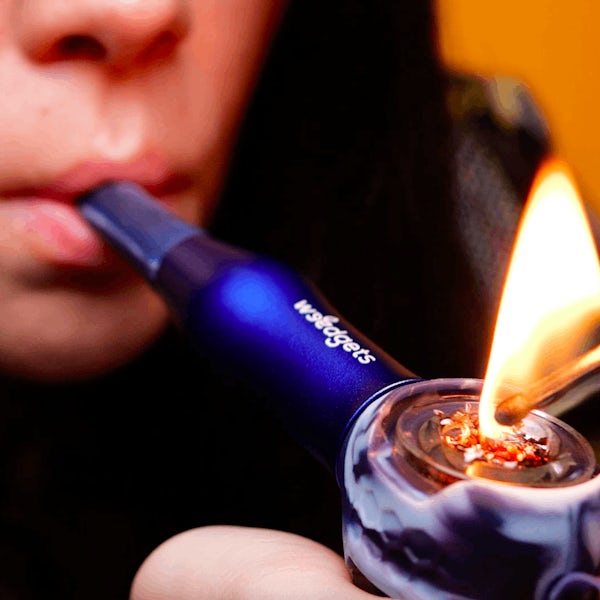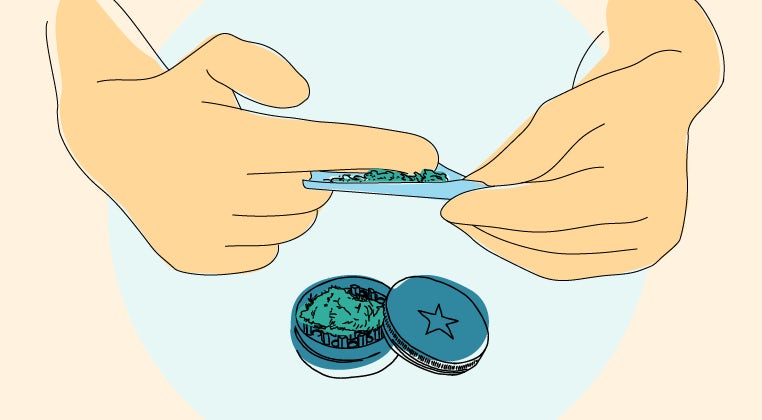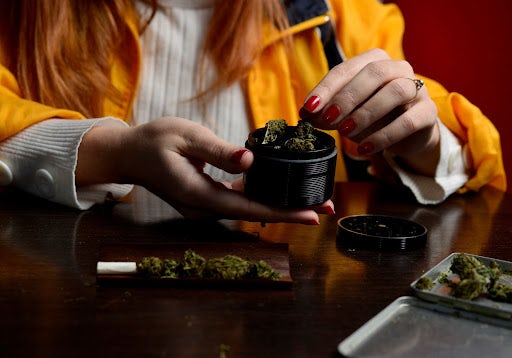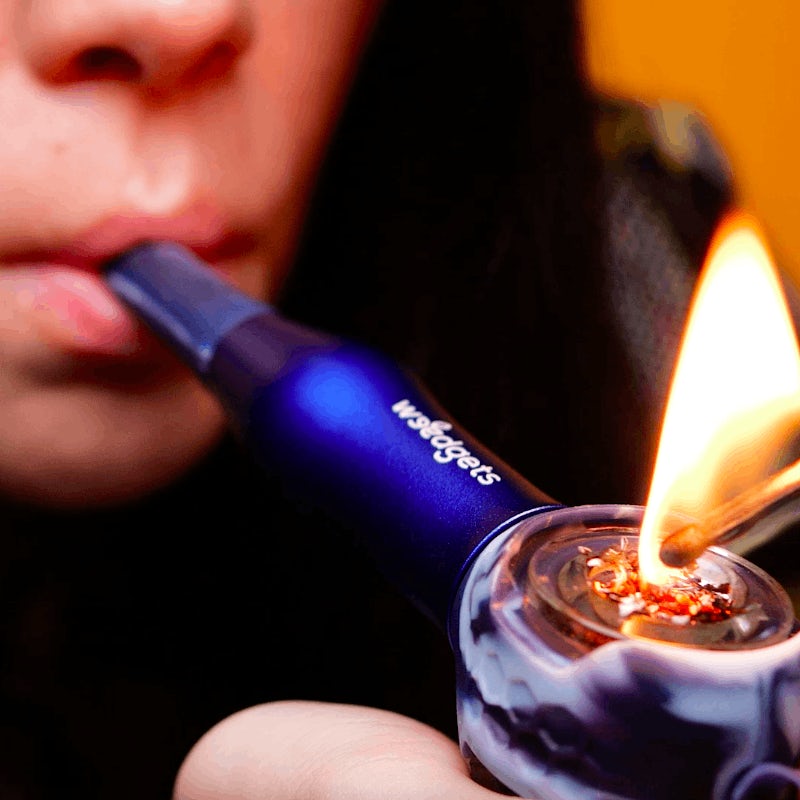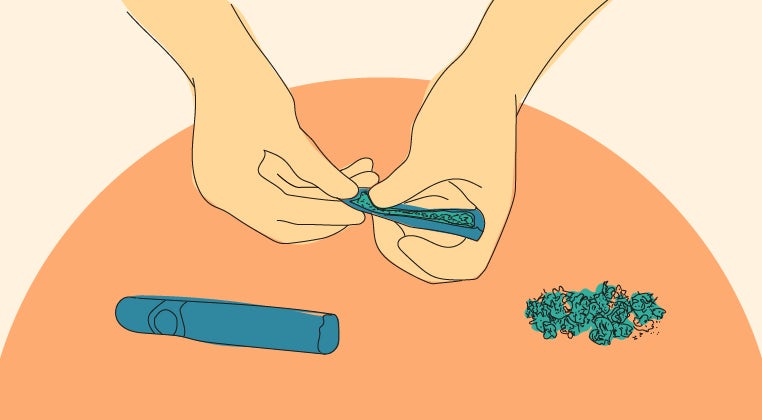Smoking is by far the most popular method of cannabis consumption, though concerns about potential health risks are leading many to look for ways to make their smoking experience safer and healthier. While research on the health effects of smoking weed alone – as opposed to mixing with tobacco – is still limited, there are some notes we can take from the scientific literature that can help minimize potential harms.
Despite the potential risks, some consumers still find smoking gives them the fastest and most effective relief, as well as enjoyment. As with most health-related decisions, you need to make your own decisions about which cannabis consumption regimen works best for you.
1. Don’t hold your breath
Contrary to popular belief, holding in smoke doesn’t get you significantly higher. At least two separate studies have found that holding smoking for 0, 10 or 20 seconds made no significant difference on the classic cannabis high, nor on other parameters such as memory impairment and mood. 1 2
So instead of helping the weed hit harder, or whatever your friends may have led you to believe back in the 90s, holding smoking actually just increases your exposure to tiny, harmful particles known as aromatic hydrocarbons. These are abundant in cannabis smoke and carry numerous health risks, though there’s no high quality evidence linking cannabis smoke to lung cancer. 3
We also know that these small particulates linger in the air as smoke/vapor, while heavier cannabinoid molecules fall more quickly. In other words, holding the smoking in the lungs has diminishing returns, because at some point there are very few cannabinoids being absorbed, but more exposure to these harmful microscopic particles.
So what should you do instead? Take slow, deep inhalations, allowing the smoke to fill your lungs and then exhaling naturally, without holding it in for an extended period.
2. Use FDA-approved rolling papers
Choosing the right rolling papers isn’t just about rolling the perfect joint or blunt – it’s also crucial for a safer smoking experience. Papers that are approved by the US Food and Drug Administration (FDA) are subjected to rigorous testing to ensure they meet safety standards, minimizing potential risks associated with harmful chemicals and additives. Whether you prefer rolling tiny “dogwalker” joints or giant party blunts, from hemp, wood pulp, flax, hemp or rice paper – the FDA stamp of approval can minimize the risk to your lungs. You can check on the FDA website for recently approved products, though in general according to the Federal Food, Drug, and Cosmetic Act (FD&C Act) any tobacco products that were on the market in 2007 are approved. So if you stick with the classics like RAW, OCB and ZigZag you should be in the clear.

3. Stick to glass bongs and pipes
Into your glass pieces? When it comes to smoking devices, glass bongs and pipes are often recommended for a safer experience – though they do carry the very real risk of being knocked over and shattering. But unlike plastic or metal or crystals, glass (specifically borosilicate glass) doesn’t release harmful toxins when heated by lighters and embers.
Heating plastic specifically can result in the release of BPA, phthalates, and other potentially dangerous components. There is some belief (although little evidence) that using a cheap, plastic bong could lead to chemicals being released that can cause serious lung damage. BPA and phthalates are believed to disrupt hormone production, and exposure to these compounds may alter metabolism and fertility. 4 5
As an added bonus, glass also offers a smooth surface that makes your piece easier to clean, reducing the accumulation of residue and potential impurities.
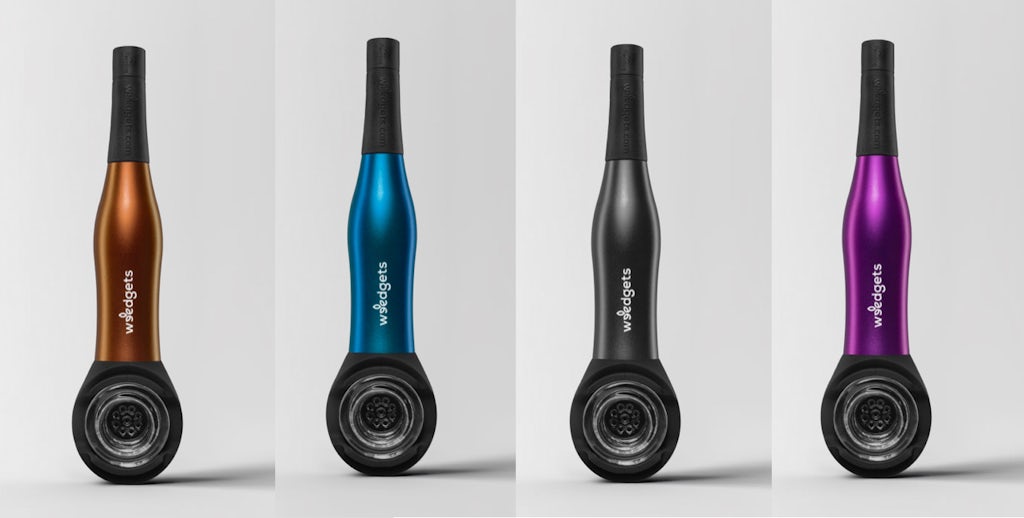
4. Treat yourself to high-quality buds
The quality of the cannabis you consume can greatly impact the harshness of your smoking experience. Fresh, well-cured flower tends to be less harsh on the throat and lungs compared to dry or poorly cured buds. Take care to source your cannabis from reputable cultivators, dispensaries or suppliers who prioritize quality and proper curing techniques. Or if you’ve got a green thumb, grow your own so you can control every step of the process.
5. Avoid sharing mouthpieces or passing joints
We all were reminded of this lesson during the COVID-19 pandemic, but it’s still true today: sharing mouthpieces or passing joints, bongs, or pipes can increase the risk of transmitting harmful bacteria or viruses. If you have a crew that you usually smoke with, decide together how you can minimize this risk – for example everyone can roll their own, or bring their own pipe. Alternatively, you can invest in the Weedgets Maze-X pipe, which features replaceable mouth tips that allow for personal use without compromising the smoking experience. Keep a bowl of Tic-Toke reusable filters in your smoking area so no one gets stuck.

6. Choose accessories backed by science, like the Maze-X pipe
When selecting smoking accessories, opt for those that have a scientific backing to support their marketing claims. The MAZE-X pipe, as well as providing a solution for sharing, utilizes an extended smoke path, promoting additional cooling and filtration. The innovative design helps reduce the temperature of the smoke and filter out potentially harmful substances, providing a smoother and cleaner smoking experience.
Another solution from Weedgets, which was founded by world-renowned medical device designer, Michael Barenboym, is the Tic-Toke filter reusable tip. Compatible with joints, blunts, pipes and even some bongs, the filters act as a barrier, reducing the amount of tar and other harmful substances that can reach your lungs. Weedgets filter tips are convenient and portable, making them ideal for parties or social gatherings.
7. Use hemp wick instead of lighters
Lighters that utilize butane or other fuels can introduce additional chemicals and odors into the smoking process. One alternative to the lighter is using a hemp wick, which is made from natural hemp fibers coated in beeswax – yet another innovative hemp plant product. Hemp wicks provide a clean and consistent flame, eliminating the risk of inhaling harmful chemicals and preserving the natural flavors of your cannabis.
Another plus of replacing your lighters with hemp wick is that your weed will taste better. Butane lighters, like those commonly found in gas stations and convenience stores, burn hotter than a hemp wick. Not only do you avoid the harsh taste of butane gas, but your flower will be more flavorful when it’s not being burned to a crisp.
8. Consider other delivery methods like edibles and topicals
Of course, no one who enjoys smoking wants to hear that the only way to completely avoid the potential risks of combustion-based consumption is to abstain. But it doesn’t have to be all or nothing. Dabbing, vaping, edibles, sublinguals and topicals are popular alternatives that eliminate the need for combustion. With thousands of new and innovative cannabis products hitting dispensary shelves every month – depending on where you live, of course – it’s worth trying out delivery methods and potentially using them to supplement, thus minimizing the amount you smoke.
For example, if you tend to smoke at regular intervals throughout the day, you might find that you can replace your morning joint with a dry herb vaporizer, keep the lunchtime joint, and replace the evening joint with an edible. If you’re treating local pain or inflammation, topicals and transdermal patches are another option that eliminate the need for inhalation completely.
Sources
- Zacny, J. P., & Chait, L. D. (1991). Response to marijuana as a function of potency and breathhold duration. Psychopharmacology, 103(2), 223–226. https://doi.org/10.1007/BF02244207
- Zacny, J. P., & Chait, L. D. (1989). Breathhold duration and response to marijuana smoke. Pharmacology, biochemistry, and behavior, 33(2), 481–484. https://doi.org/10.1016/0091-3057(89)90534-0
- Wei, B., Smith, D., O’Connor, R., Travers, M. J., & Hyland, A. (2018). Examining the Association between Body Burdens of Harmful Chemicals and Heaviness of Marijuana Smoking. Chemical research in toxicology, 31(8), 643–645. https://doi.org/10.1021/acs.chemrestox.8b00160
- Toquet, S., Cousson, J., Choiselle, N., Gozalo, C., Giusti, D., Bani-Sadr, F., & N’Guyen, Y. (2021). Alveolar hemorrhage due to marijuana smoking using water pipe made with plastic bottle: case report and narrative review of the literature. Inhalation toxicology, 33(5), 168–176. https://doi.org/10.1080/08958378.2021.1939465
- Lucas, A., Herrmann, S., & Lucas, M. (2022). The role of endocrine-disrupting phthalates and bisphenols in cardiometabolic disease: the evidence is mounting. Current opinion in endocrinology, diabetes, and obesity, 29(2), 87–94. https://doi.org/10.1097/MED.0000000000000712
Sign up for bi-weekly updates, packed full of cannabis education, recipes, and tips. Your inbox will love it.

 Shop
Shop Support
Support
